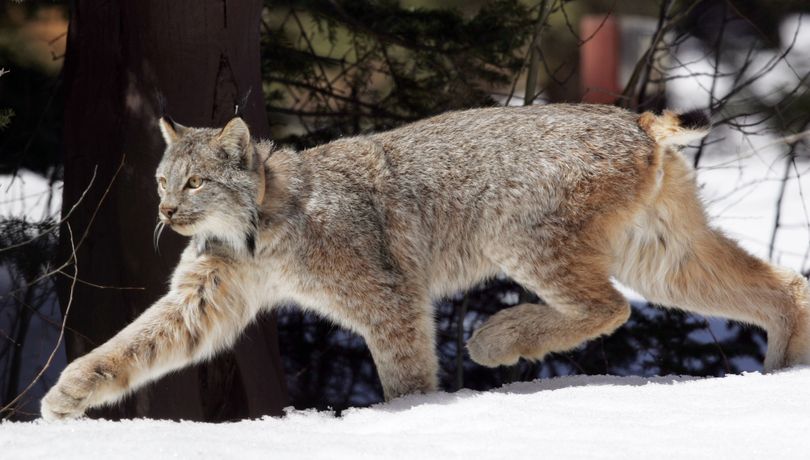Canada Lynx Sighted on Salmon-Challis National Forest

WILDLIFE -- Idaho Fish and Game biologists confirmed a recent sighting of a Canada lynx on the Salmon-Challis National Forest.
The sighting is the first direct evidence of lynx presence on the forest since 1991.
Idaho Fish and Game collected hair and scat samples from the animal to determine its origin, according to an agency media release.
“This would be an extremely rare event, and we’re waiting to get genetic test results before we confirm it’s a native, wild lynx,” Fish and Game wildlife manager Tom Keegan said.
A local recreationist reported the animal to Fish and Game after seeing it in a legally set foot-hold trap targeting bobcat. Fish and Game officials arrived at the scene within the hour and assessed the lynx for injuries and potential treatment. With no injuries indicated, officials released the lynx from the trap.
“We watched it wander off in good shape,” conservation office Dane Cook said. “It had all the classic lynx features: long legs, huge furry paws, ear tufts, and the short black-tipped tail.”
Read on for more details about lynx.
Preferred lynx habitat is young, regenerating forests that support its primary prey, snowshoe hares.
“This lynx keyed into an area with a healthy population of snowshoe hares,” Fish and Game wildlife biologist Beth Waterbury said.
Canada lynx are listed as threatened under the federal Endangered Species Act, and they are designated an Idaho “species of greatest conservation need.” Fewer than 40 lynx records are known for the Salmon-Challis region, dating from 1896 trapping logs to an observation of lynx tracks reported in 2010. The last verified record of a lynx in east-central Idaho was an incidentally trapped animal from the Pahsimeroi Valley in 1991.
Trapping methods to avoid lynx, and lynx and bobcat identification pages are found on pages 43 and 44 of Idaho's 2011-2012 Upland Game, Furbearer, Turkey Seasons and Rules book.
